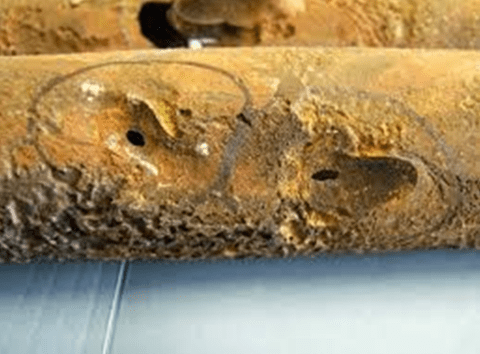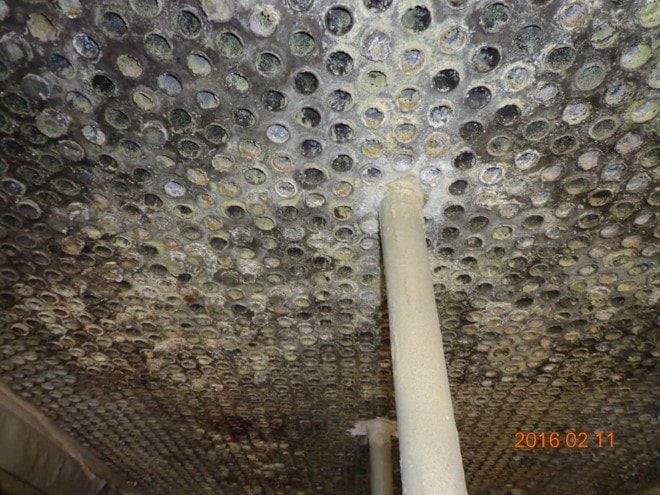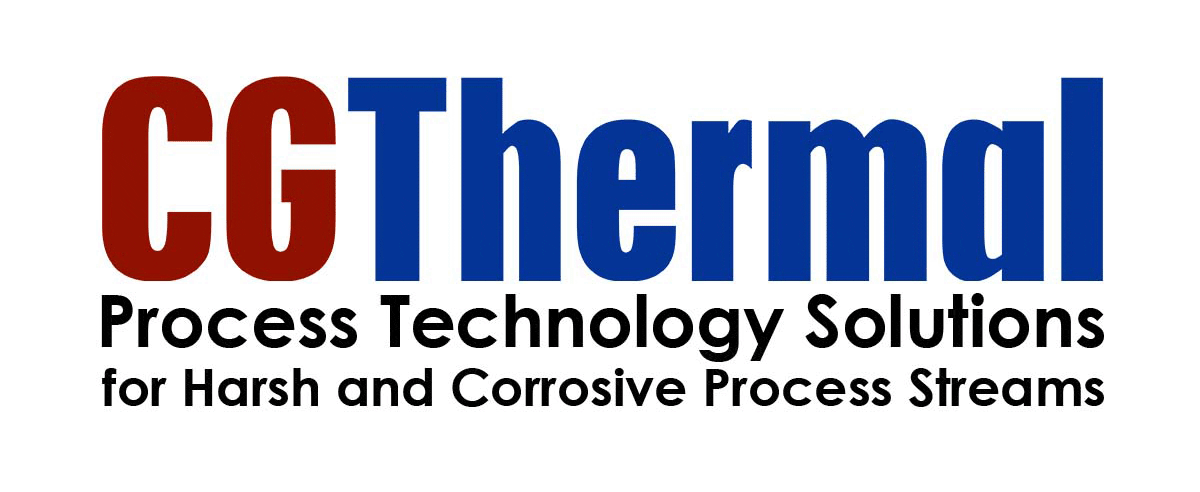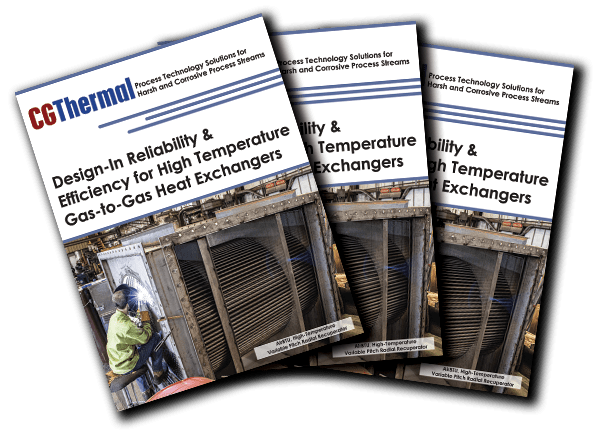High-temperature gas-to-gas heat exchangers are commonly found within sulfuric acid plants, functioning as interchangers or preheaters for the catalyst bed, and as preheaters at the sulfur furnace. These recuperators see very high temperatures and high temperature differentials. Typically, at least one, if not both gas streams are highly corrosive if allowed to condense.

Undoubtedly, if a standard shell and tube design is employed, several failure modes will most likely occur. These include:
Cold-end corrosion
The cold gas stream often enters the heat exchanger at a temperature below the dew point of the constituents contained in the hot gas stream. This creates a potential for material surface temperatures below that dewpoint. These are commonly referred to as cold spots. If a gas stream is in contact with a cold spot, condensation will occur. The resulting acid will cause localized corrosion commonly referred to as cold-end corrosion.
Cold-end fouling
 When an SO3 rich gas stream is present, cold spots will cause the SO3 to precipitate. The SO3 creates a tenacious bond with the metal tube wall. These deposits continue to build up and if the unit is not shut down for maintenance, the resulting blockage of the gas stream will lead to obvious capacity issues.
When an SO3 rich gas stream is present, cold spots will cause the SO3 to precipitate. The SO3 creates a tenacious bond with the metal tube wall. These deposits continue to build up and if the unit is not shut down for maintenance, the resulting blockage of the gas stream will lead to obvious capacity issues.
Stress failures
High-temperature gas-to-gas recuperators experience rapid and extreme temperature changes. This results in rapid and significant material expansion and contraction. With standard shell and tube designs, the tubes will most likely expand at different rates due to uneven temperature distribution within the tube bundle. This results in uneven forces exerted on the tubesheet by the tubes and ultimately failure of the tubesheet welds.
Unanticipated pressure drop
Additionally, if the pressure drop is higher than anticipated, the operational flow rate will be less than anticipated as well.
All of these failure modes impede the performance of the recuperator and ultimately the performance of the entire plant. Once in operation, the remedy or repair is very costly and time consuming. If not remedied, the operational life could be as short as several years.
There is no need to deal with a recuperator that only outputs short-term operation with need for maintenance every few years. The AirBTU VPRR, High-Temperature, Gas-to-Gas Recuperator designs out the above failure modes and extends operating life 2-3 times the standard designs.
Learn more about these failure modes and how the AirBTU VPRR combats them by downloading this white paper:


